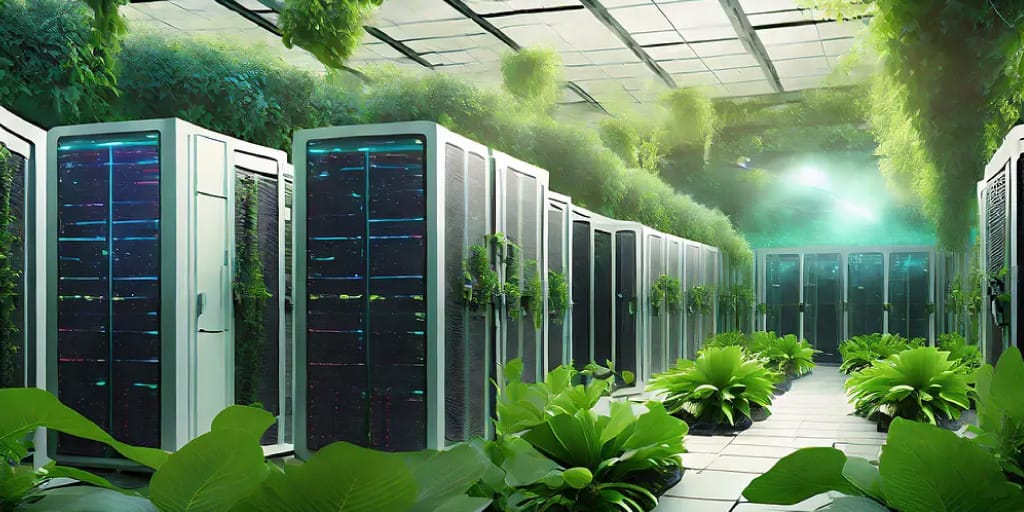There's a growing trend that's becoming as fundamental as digital transformation itself: the emphasis on sustainability. Across the globe, businesses increasingly regard sustainable practices not just as a corporate responsibility but as a core aspect of their strategy. This shift is particularly relevant in Release Management and Test Environment Management. For professionals in these areas, the integration of Green IT is becoming an essential consideration.
Why is this important for you? Adopting Green IT principles in your test environment management is not about being eco-conscious; it's about operational efficiency, cost reduction, and playing a vital part in the global movement towards sustainability.
This article seeks to demystify Green IT and explore its profound impact on Test Environment Management. By embracing these practices, you can contribute significantly to reducing your organization's environmental footprint while optimizing your processes.
Understanding Green IT
Green IT refers to the practice of using information technology in a way that minimizes environmental impact. This involves the efficient use of energy and resources in the design, operation, and disposal of IT systems and equipment. The goal extends beyond reducing energy consumption to include a broader focus on the entire lifecycle of IT products, aiming for sustainability from production to disposal.
The IT sector, particularly data centers and extensive computing networks, consumes a significant amount of energy. Current estimates suggest that data centers are responsible for up to 3% of global electricity consumption, with projections indicating a potential increase to 4% by 2030. This substantial energy requirement underscores the importance of sustainable practices in IT to mitigate environmental impact, including reducing greenhouse gas emissions and conserving resources.
Adopting Green IT practices offers notable advantages for businesses. Key among these are cost savings from reduced energy consumption and lower utility expenses. Additionally, Green IT initiatives can enhance a company's brand image, aligning with the growing consumer and stakeholder interest in environmental responsibility. Embracing sustainability can also drive innovation, leading to the development of new, efficient technologies and operational practices.
Green IT in Test Environment Management
Traditional Test Environment Management (TEM) practices have often overlooked their environmental impact. The reliance on physical servers and infrastructure leads to significant energy consumption and carbon emissions. Additionally, the lifecycle management of hardware in testing environments — often characterized by frequent upgrades and replacements — contributes to electronic waste (e-waste).
The integration of Green IT principles into TEM involves several strategies:
Practical Steps to Implement Green IT in TEM
1. Assessing Your Current TEM Practices
Conducting a comprehensive assessment of your current test environments, is the first step in adopting Green IT principles in TEM. Identify areas where energy consumption is high and determine the sources of e-waste. This assessment should also include a review of the hardware and software being used, as well as the processes in place for managing these resources.
2. Adopting Sustainable TEM Strategies
Once the assessment is complete, you can implement strategies for more sustainable TEM. This can include transitioning to energy-efficient hardware, leveraging virtualization, and adopting cloud-based testing environments. Additionally, establishing sustainable lifecycle management for IT equipment can help minimize e-waste.
3. Enhancing TEM through Efficient Scheduling and Management
Efficient management of test environments, such as through the use of tools like Jira and the Golive Jira App, is crucial. This involves:
By adopting these practices, organizations can significantly reduce their environmental impact while enhancing operational efficiency and cost-effectiveness.
4. Monitoring and Continuous Improvement
Implementing Green IT practices in TEM is an ongoing process. Regular monitoring of energy consumption and resource utilization is key. Utilize metrics and KPIs to measure the effectiveness of your green initiatives. Continuous improvement should be a part of your strategy, adapting and evolving your practices to be more sustainable over time.
5. Employee Engagement and Training
Creating a culture of sustainability within your organization is essential. Educate and engage your team members about the importance of Green IT and sustainable practices. Training sessions and workshops can be effective in raising awareness and fostering a shared commitment to reducing the environmental impact of TEM.
Learn how Release Dashboards will help you master your communication.
Learn how Release Dashboards will help you master your communication.
The Future of TEM with Green IT
As we look towards the future, the integration of Green IT within Test Environment Management is poised to play a pivotal role. The evolving landscape of IT demands a shift towards more sustainable practices, not just as a response to environmental concerns but also as a strategic business move.
Innovations in technology, such as advancements in cloud computing, AI-driven analytics for energy optimization, and more efficient virtualization techniques, are set to further revolutionize TEM. These advancements will not only reduce the environmental footprint of IT operations but also enhance the efficiency and cost-effectiveness of test environments.
Moreover, the increasing emphasis on corporate social responsibility and environmental regulations will likely steer organizations to adopt Green IT practices more aggressively. This shift is expected to bring about a new standard in TEM, where sustainability is integrated into every aspect of testing and environment management. By proactively embracing these changes, organizations can position themselves at the forefront of this transformation, leading the way in both technological innovation and environmental stewardship.
Conclusion
In conclusion, the integration of Green IT into Test Environment Management is essential for aligning technological innovation with environmental responsibility. This strategic approach not only supports environmental conservation but also enhances operational efficiency and cost-effectiveness.
As we navigate towards a more sustainable future in IT, tools like the Golive Jira App are instrumental. They enable better management of test environments, contributing to sustainability objectives through efficient resource utilization, reduced energy consumption, and minimized waste. Embracing such solutions is a step forward in achieving eco-friendly and efficient Test Environment Management.
Transform your Test Environment Management with Apwide Golive:
Leading companies have already Golive as part of their DevOps toolchain:





Free trial / Free forever up to 10 Jira Cloud users!

This article gave me with fresh ideas on the topic, appreciate it.